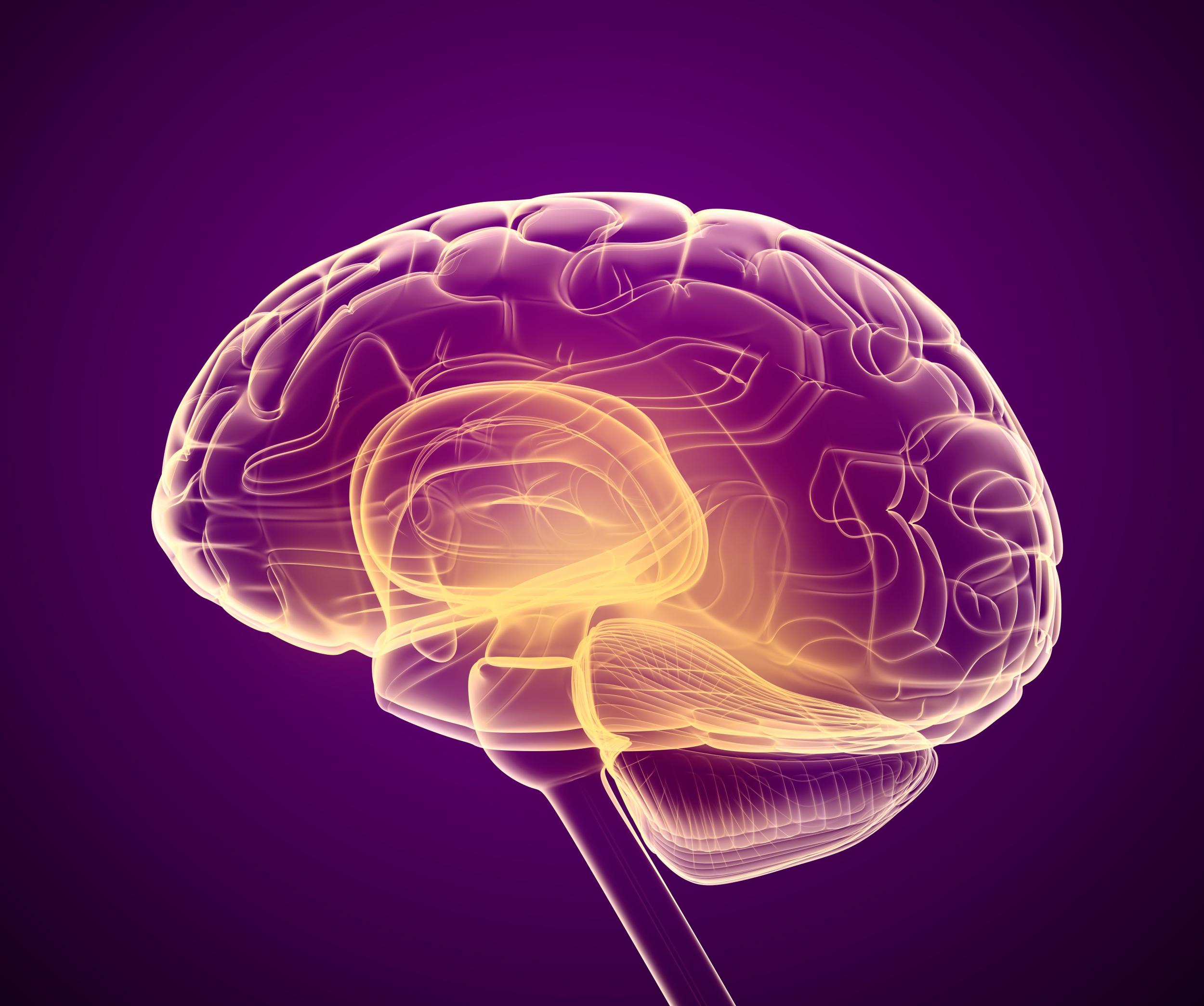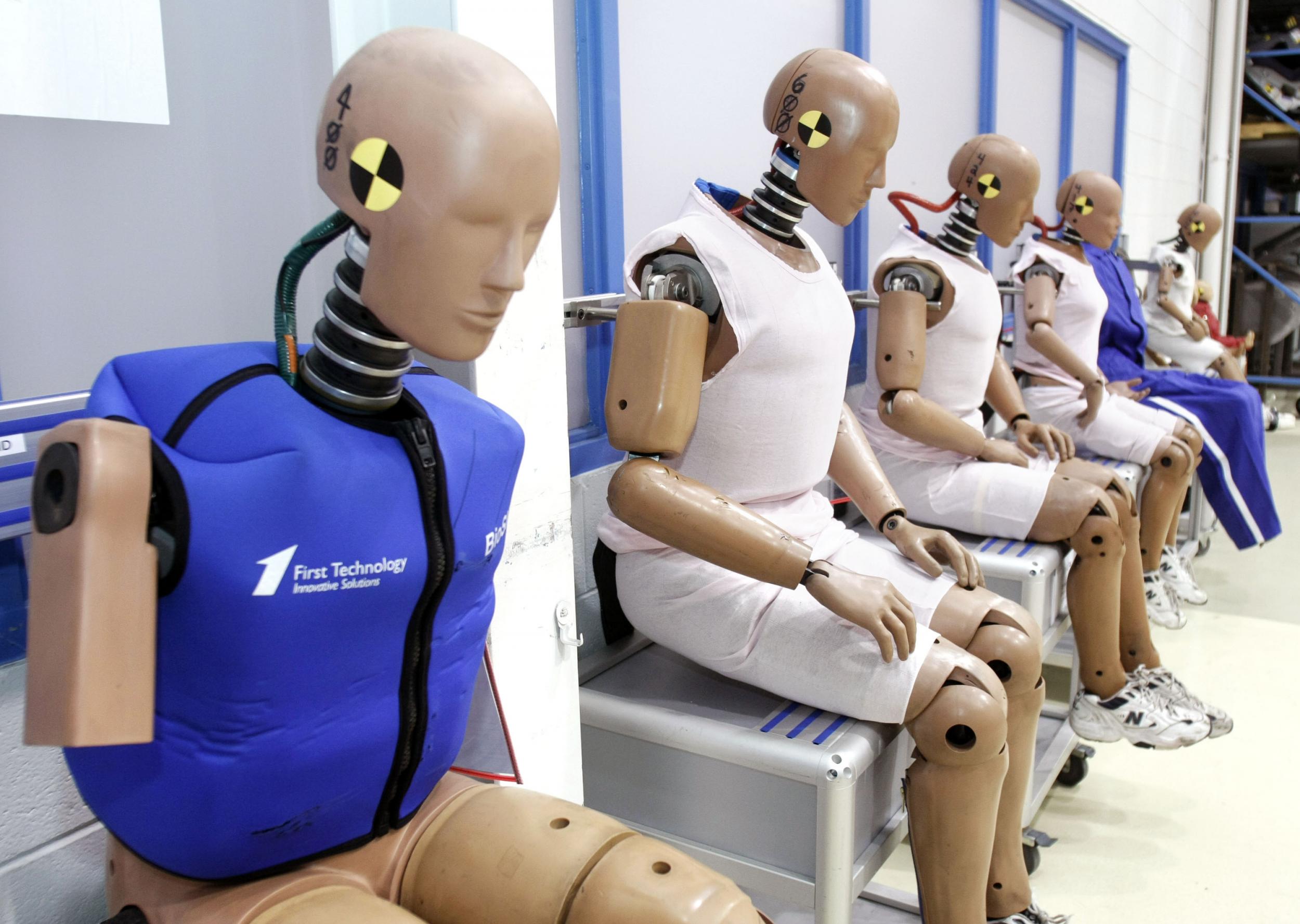Neurological conditions in women are often misdiagnosed, mishandled and misunderstood
Female patients are still subject to sexism when it comes to their health. Holly Baxter speaks to the women whose underlying neurological conditions were overlooked and investigates why this is a problem throughout the world of medicine


Catherine Gladwyn’s periods stopped in 2011, when she was 35 years old. Around six months later, she started experiencing memory loss. “I’d go to the supermarket and completely forget why I was there,” she says. “But you could think to yourself, what an idiot, I’ve forgotten, like when you run upstairs and you get to the top of the stairs and you can’t remember what you’re there for. A lot of the time I could think to myself, it’s just normal, I have a lot to think about, my daughter is a teenager and so on. But then it got worse and there was no ‘of course that’s what it is’ moment any more.
“I was watching TV one day and President Obama came on and I couldn’t remember his name at all. There were occasions at work where someone would say to me, ‘Is Mary in today?’ and I’d say, ‘No, I haven’t seen her’, but actually I’d just come out of an hour-long meeting with Mary. I couldn’t remember my daughter when she was younger. I’d look at photographs and not remember. Words more than a couple of syllables long I would struggle with. Everything just kind of went.”
Gladwyn had been having problems for a year when she approached a roundabout in her car and couldn’t remember which way to drive round it. “I went back to the GP,” she tells me, her voice strong and clear. “She put me on beta-blockers [for anxiety]. She said, ‘I think you’re a little bit stressed.’ I just wanted to scream at her, to say: ‘There’s something wrong! This isn’t right!’”
* * *
Sofia Petersson was 39 when she was diagnosed with early-onset Alzheimer’s, but she’d been having problems for a long time before. She can’t find the words to explain all the symptoms she had when we speak over the phone – her from a “very small”, idyllic village in Sweden and me from a downtown Manhattan office in New York – but she repeats that she kept feeling there was “something very wrong”.
She saw three separate doctors, all of whom suggested she was overdramatising symptoms that were normal or easily attributable to minor ailments. She was told again and again that anaemia could explain the memory loss, the confusion and the chronic exhaustion, even after informing her doctors that her own father had died of hereditary Alzheimer’s at a relatively young age.
Eventually, Sofia tracked down the doctor who had overseen her father’s treatment. He had long since retired but she was persistent: she sent him letters describing what she’d been through and he pointed her “in the right direction”. Not long after that, she was told she had the same disease as her father; by that time, despite the grim diagnosis, her overwhelming feeling was of relief.
One of the first things training physicians are taught is that “common things are common”. Why assume a brain tumour when it’s more likely to be a migraine? Why jump to malaria when it’s probably the flu? Why assume an extremely rare physical disease when a comparatively common mental one will do?
There are, of course, reasons why it is often best to assume – or at least to rule out – a rare but deadly disease rather than continue insisting on the diagnosis for something more mundane and much less harmful. It’s good practice to check for a heart attack even if it might be a panic attack, for example. A routine check for bowel cancer is worth the extra cash and inconvenience even if the patient turns out to have IBS.
When the patient is female, things get a little more complicated. It’s no secret that women have been categorised as “hysterical”, “neurotic” or “over the top” when they should have diagnosed with specific diseases and treated accordingly throughout history. Women experience longer waits to be diagnosed with neurological conditions and with cancer than men; they usually have to visit their GP more than five times before being given such a diagnosis. Their concerns are so likely to be attributed to mental health conditions such as anxiety and depression that one study estimated between 30 and 50 per cent of women with a diagnosis of depression actually are suffering from something else entirely.
All of us can fall into the trap of believing sexist stereotypes, doctors included. But when it comes to women and medicine, personal prejudice might not be the most persistent problem. Instead, it could be the research upon which doctors rely for medical manuals, descriptions of symptoms and diagnostic advice that causes the real problems.
30-50
per cent of women with a diagnosis of depression are suffering from something else entirely
Take the sleeping pill zolpidem (usually marketed under the brand name Ambien) as an example. Zolpidem was approved for use in Europe in 1988, and in the US in 1992. More than 60 per cent of patients who take the popular sleeping aid are women, and in the US in particular it is commonly used for jet lag. Most of the time zolpidem is used, it’s completely safe. But after a spate of reported “sleep-driving” by women under the influence of the drug either a few hours after they’d taken it or even the next day – some with fatal results – journalists began questioning whether it should be prescribed so readily and with so few warnings.
A Marie Claire investigation into cases where women had accidentally killed or almost killed themselves or others ramped up the pressure, and in 2013 – 21 years after the drug had been signed off as safe for prescription by the US Food and Drug Administration – the manufacturer agreed that the recommended dosages for women should be lowered.

Zolpidem had been through extensive clinical trials before this happened, but none of them had picked up on the fact that the effects of the drug “are different in women and men”, in the words of Dr Ellis Unger from the FDA’s Office of Drug Evaluation. “We don’t understand why yet, but women are more susceptible to next-morning impairment,” he says.
This was only picked up on after extra clinical trials in 2012 and 2013 were run to try and explain the high-profile court cases where zolpidem-related sleep-driving was used as a defence for manslaughter. Those 2012 trials were the first to involve women. Doctors may have done the prescribing, but they were led by instructions taken from trials that didn’t account for women at all.
Much has been said about the sexism of car-crash dummies (built in the image of men, with no allowances for female body shapes, therefore resulting in higher numbers of female deaths in car accidents), gendered pharmaceutical products (painkillers for periods marketed as more expensive than painkillers for generic muscle pains, for instance, despite identical ingredients) and smartphones made to fit “perfectly into the palm of your hand” (provided you have the average handspan of a fully grown man). In many cases, these products and tactics are becoming less popular and are being corrected. In medicine, however, there are so many roadblocks involved that it’s sometimes hard to see where the way out is at all.

It was only in 2001 that the Institute of Medicine published a paper asking “Does Sex Matter?”, acknowledging that to exclude women from clinical trials because (according to male researchers) their fluctuating hormones made them less reliable test subjects was probably an error. Those are the trials of the past, but they inform the diagnoses of the present and, most worryingly, precedents for the future. Artificial intelligence, which many people have claimed will revolutionise and transform the NHS within a few years, is predominantly trained using male voices and male data.
A “sexist AI tool” for recruitment was scrapped by Amazon last year because, after learning from predominantly male CVs and male hiring decisions, it started rating CVs lower when they mentioned the word “women”. This is the same sort of algorithm which some have been keen to develop for triage or diagnosis of non-urgent health issues in NHS hospitals and surgeries.
Diagnostic criteria for physical and mental health disorders are already heavily weighted towards men; symptoms usually experienced only by women are often listed as ‘less common’ or ‘unusual’ symptoms for conditions such as heart attacks
Diagnostic criteria for both physical and mental health disorders are already heavily weighted towards men; symptoms usually experienced only by women are often listed as “less common” or “unusual” symptoms for conditions as well-known and common as heart attacks.
A man experiencing a heart attack is much more likely to predominantly feel chest pain, whereas a woman may not experience that at all; instead, they often feel a pain in the upper back combined with severe breathlessness. Without the signature “elephant sitting on you” chest pain, women and their doctors can end up both assuming that a heart attack isn’t a possibility. Adding this to the fact that women are often presumed to be exaggerating the amount of pain they’re in and you get a potentially deadly combination.
The gender bias in autism is one example of an extremely persistent gender myth about a condition. For decades, autism was considered to be “extreme maleness”. Researchers still assume that autism is four times more likely in boys than girls. But almost all the studies on children are carried out on boys, and childhood is the most common time to be diagnosed with autism.
Girls often exhibit similar symptoms to boys – they rock back and forth or bang their hands, have obsessive interests, and have heightened sensitivity to lights, smells, sounds and textures – but they’re often overlooked because their obsessive interests might be to do with socialising or reading, whereas the traditional autistic model suggests people with the condition should obsess about machinery, mathematics or computing.
Like elsewhere, the diagnostic manual has been written around boys and so boys participate more often in the research, which serves to confirm biased diagnostic criteria. Girls with the same symptoms are then told they have anxiety, depression or personality disorders, and offered treatments that are potentially useless to them.

Catherine Gladwyn, who was told by her doctor that she was probably “stressed” after being left unable to drive round a roundabout, eventually asked to be referred privately and was later diagnosed with a pituitary tumour. “My prolactin levels were 9,000 when they should have been 20,” she says. By that time she’d lost her balance and could barely walk. But everyone expects patients with pituitary tumours to get headaches, and she never experienced head pain even once.
In 2012, Catherine had gamma knife neurosurgery to remove the tumour and she now relies on medication to regulate her cortisol levels and keep her alive. She was told that pituitary tumours can lie dormant for years or grow silently for decades. Some people never even know they have them.
“I’m really pleased I got the tumour,” she tells me without hesitation when I ask her how she feels about undergoing such extreme treatment. “It explained symptoms I’d had since I was a teenager. I truly believe – and there’s nothing to suggest that I’m wrong about this – I had something wrong with me for a long, long time. I can’t believe how hard I used to find life before I had the tumour destroyed. I struggled so much – with friendships, self-confidence, communication.
“I felt angry all the time. I have no lifelong friends because I couldn’t make friends. I would always fall out with people, I couldn’t tolerate anybody. I have no relationship with my mum. I was on antidepressants for such a long time.” Was she ever offered counselling to deal with the effects the tumour had had on her? “No, but I wouldn’t have wanted it because I’d been offered therapy, beta-blockers, antidepressants all my life. I thought I needed it. But as soon as the tumour was removed, it all changed. Immediately.”
Sometimes the treatment that women need is so simple that it feels like doctors can’t see the wood for the trees. Cheri Ballinger was working as an actor and model in Los Angeles when in 2014 during a photoshoot she fell seven feet on to concrete from a trampoline. She’d been told to do an action shot in midair by the creative director. “It was a last-minute thing, no padding, no safety measures,” she says. “It was just one of those things.”
In my view, it’s criminal. I lost my ability to walk, I lost my ability to speak, I lost my equilibrium, I wasn’t able to move without throwing up... It was horrific
Cheri was transported to the ER by ambulance and examined but, because she’d regained consciousness and seemed lucid, she was discharged a few hours later while still in a lot of pain. She doesn’t mince her words about the decision taken by the doctors who examined her: “In my view, it’s criminal.” Within 48 hours, “I lost my ability to walk, I lost my ability to speak, I lost my equilibrium, I wasn’t able to move without throwing up… It was so horrific, the helplessness you feel when you feel you’re not right. You feel these changes in your body and it is so scary and there’s nothing you can do about it. Your body is all of a sudden changing and you’re just kind of experiencing it, crying out for help without being able to verbalise anything. I was going back and forth to the ER and [eventually] medical professionals started saying, ‘There’s something seriously wrong with this girl.’”
Cheri didn’t have a mild concussion; she had a traumatic brain injury, and it took the doctors who’d dismissed her a long time to realise that. The pain, she says, was “unbearable”, and she was put on heavy doses on Valium and painkillers to manage it. It took her two and a half years to walk and talk again, and her memory was severely affected: “I would walk into a room and not know what a toothbrush was for.” After three and a half years, when a lot of her symptoms still persisted, she developed gastritis because of the harsh effects of the painkillers on her stomach. Her doctor suggested massages.

Cheri’s turning point came, she says, when she saw a naturopathic doctor – pain and disorientation “had become my norm, my everyday life,” she says. “At that point, you’ll try anything.” The female naturopath suggested doing some hormonal tests, and found that Cheri had unusually low levels of progesterone. The first thing she did was prescribe topical progesterone cream, which Cheri says was “life-changing. Within a week or two, the migraines [I’d been having every day] went completely away… I was able to focus on getting better. It was the beginning of hope.”
It was four years since she’d fallen off that trampoline. “I had been in a dark, quiet room for four years in agony,” she says. “When you’re out of the world that long, a lot of things change. People got married and had babies in the span of me throwing up and being in bed… I got a second chance at life.”
Cheri is now an ambassador for the Women’s Brain Project, a group of neuroscientists and doctors working to advocate for women’s neurological health and balance out the gaps in gender which currently exist in medicine. I asked them about whether progesterone cream really can have such a dramatic effect on people with traumatic brain injuries (TBI), and they referred me to Dr Katrin Rauen, a neurologist and TBI expert.
She says that animal testing had originally shown no benefit, until the studies were broken down in terms of gender; then it was shown that females experienced a “superior outcome” when treated with progesterone. She would like to see further research into progesterone’s effects on women with TBI, and says that those studies “clearly underline the need” to conduct further studies.
Cheri didn’t have a mild concussion; she had a traumatic brain injury, and it took the doctors who’d dismissed her a long time to realise that. The pain, she says, was ‘unbearable’
Maria-Teresa Feretti, who is the chief scientific officer at the Women’s Brain Project and works to find a cure for Alzheimer’s, told me that most women she works with who have neurological disorders are told they have mental health problems instead. It’s become such an entrenched problem in her line of work that the Brain Project is dedicating an entire panel at its annual forum to it. She compared this dismissal of symptoms to the dismissal of migraine – which is a condition more common among women than men – as “just a headache” in the medical community.
In reality, migraine is a serious neurological disorder involving abnormal electrical activity in the brain, similar to epilepsy; some epileptic drugs can also treat migraine because of this, and people with one are more likely to also have the other. Yet the idea that a migraine is a “minor issue” women (and indeed men) just need to “get over” persists.

A few years ago, my little sister walked out of the house without any shoes on. When my father asked what she was doing, she ran back inside and acted like it had been a joke. Nobody drew a connection with the persistent headaches she’d been having, the arguments she’d been starting with people in the house because she believed they were lying to her or moving things around without her permission.
People thought it was strange when she started coming home from school to take naps in the middle of the day because she was too tired to make it through otherwise; but she was 15 years old and outwardly healthy, so everyone assumed she’d just been staying up all night on her phone to boyfriends or classmates, or played a lot of sports during the day.
Then she went to bed and stayed there, for one day, two days, almost three. At first it seemed like she had a migraine; then she appeared to be having hallucinations. When the doctor came out, he thought it was schizophrenia. It was, he said, common in young women of a certain age. They expected to take her in to the psychiatric ward, but they arranged a brain scan just in case.
It turned out that my sister had an extremely rare and dangerous neurological disorder called Susac Syndrome. It’s an autoimmune disorder which most doctors will never encounter in their entire careers; only around 200 people have ever been diagnosed with it. After aggressive treatment with steroids and chemotherapy, she made a partial recovery, but is now pregnant with her second child and experiencing unusual symptoms doctors can only deal with on a case-by-case basis.
Susac Syndrome is much more common in women, many of whom develop the condition or have a relapse during pregnancy. Despite this, there are no official therapeutic guidelines for the condition at all. Doctors are told that male patients usually have the “full” set of symptoms that have been noted down, and women may have “different combinations”. Research round why Susac Syndrome occurs around pregnancy specifically and whether hormones such as oestrogen or progesterone are involved has never been done, even though some people have found that terminating their pregnancies have stopped the disease in its tracks. For people like my sister, pregnant and in partial remission, the advice remains to “wait and see”.
Is it good enough?
Join our commenting forum
Join thought-provoking conversations, follow other Independent readers and see their replies
0Comments